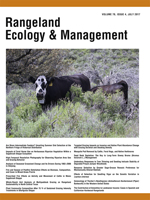The relevance of broad-spectrumadvocacy of rotational grazing is often questioned becausemany research data do not support the practice, yet it is supported by on-ranch level indicators, ranch-level research, and government agencies that provide technical assistance to private land owners and managers. It is theorized that whole-ranch systems differ from experimental plots because of the use of adaptive management. The purpose of our study was to understand the perceptions of ranchers on impacts of ranch-scalemultipaddock grazing, especially as it relates to rangeland sustainability in six North Central Texas counties. Sustainability was identified by three indices: land health sustainability, economic sustainability, and social sustainability. Four categories of grazing systems were identified: continuous, 2–4 paddocks, 4–8 paddocks, and 8 or more paddocks. Data were collected using a self-assessment mail survey. Analysis of respondent data indicated that increasing the number of paddocks may improve land health sustainability indicators on commercial ranches in North Central Texas, especially when respondents use eight or more paddocks.
How to translate text using browser tools
1 July 2017
Whole-Ranch Unit Analysis of Multipaddock Grazing on Rangeland Sustainability in North Central Texas
Wayne Becker,
Urs Kreuter,
Sam Atkinson,
Richard Teague
ACCESS THE FULL ARTICLE

Rangeland Ecology and Management
Vol. 70 • No. 4
July 2017
Vol. 70 • No. 4
July 2017
multipaddock grazing
rangeland health
rangeland sustainability
whole-ranch assessment




